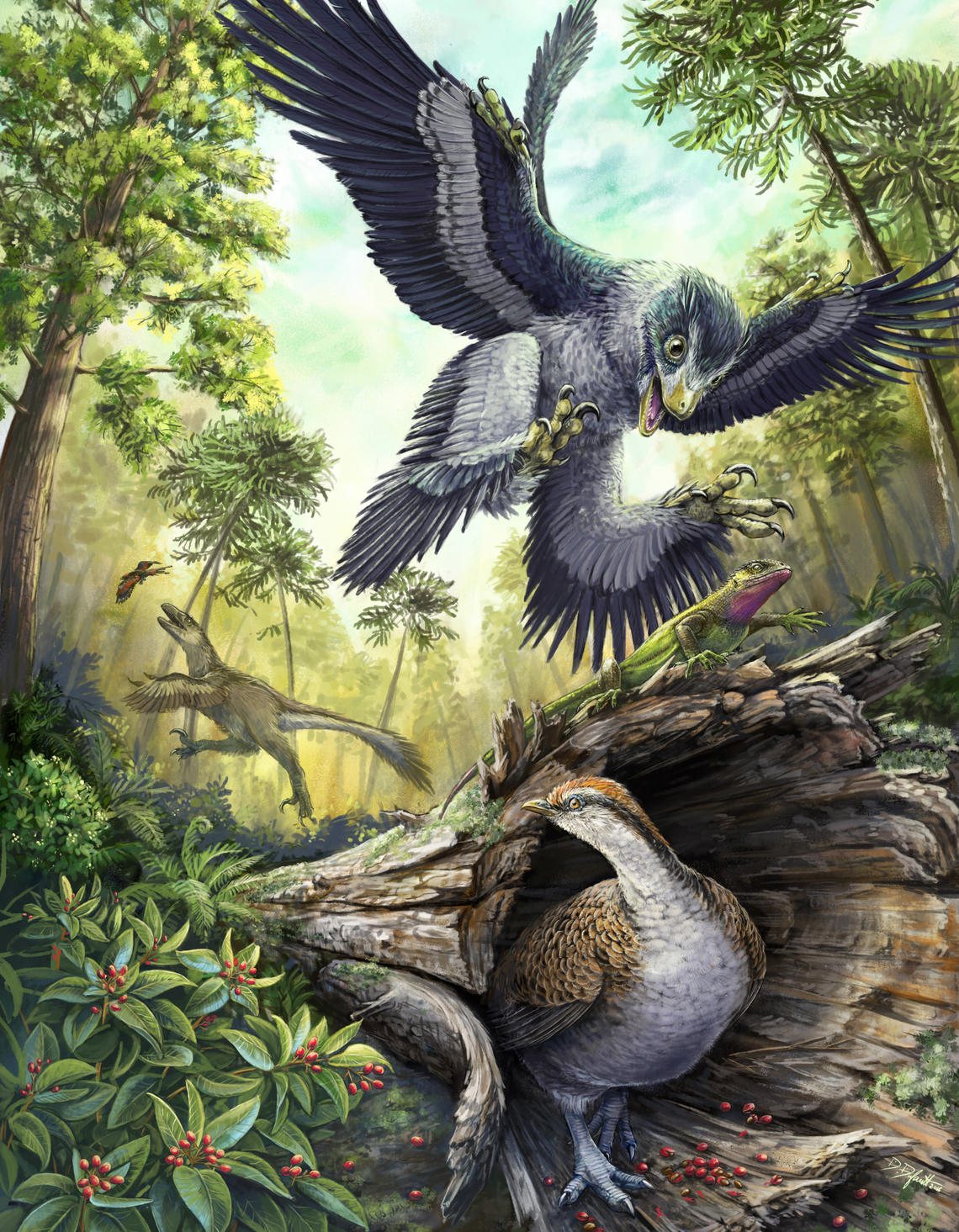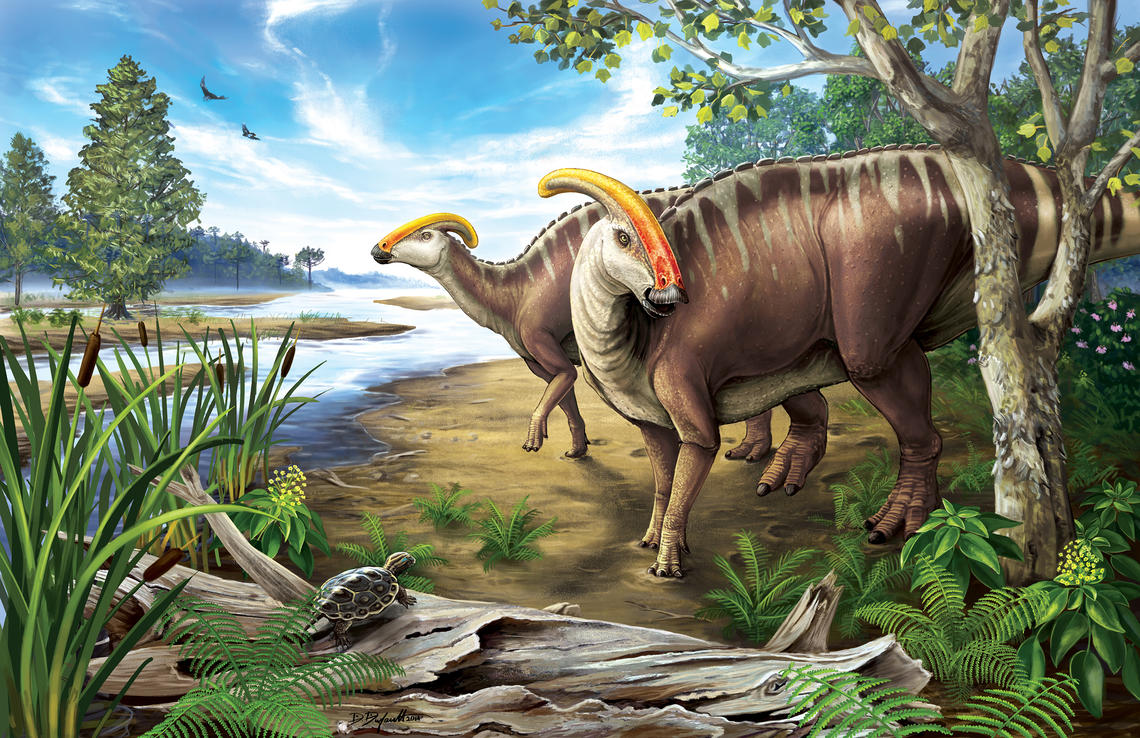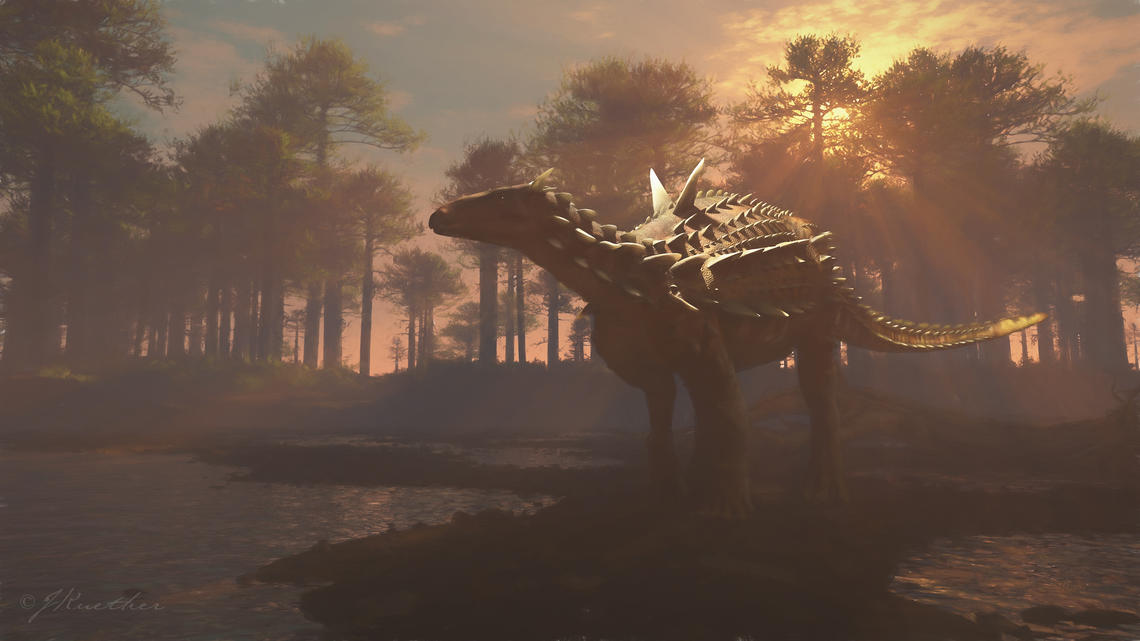Sept. 12, 2017
Evolving, disciplined world of paleoart in spotlight

Hell Creek Survivor, by Danielle Dufault, 2016
It might be suggested that the perfect marriage between science and art is found in the ever-evolving image of the dinosaur.
A new Paleoart Exhibit, on display Sept. 12-24 at the Taylor Institute for Teaching and Learning, certainly indicates as much. The exhibit — which is also a featured highlight of this year’s Beakerhead Festival (Sept. 13-17) — looks at the crucial importance of paleoart to the science of paleontology.
Paleoart refers to artistic works that attempt to reconstruct or depict prehistoric life according to the fossil record and existing scientific evidence.

Parasaurolophus in the Kaiparowits, by Danielle Dufault, 2016
Art often helps the research
“Paleoart is critical to the public communication of our work,” says Susanne Cote, an assistant professor in the Department of Anthropology and Archaeology who studies fossils and who helped organize the exhibit. “There’s an important exchange that happens between the artist and researchers as the artist asks questions: ‘Can I make this creature muscular? What do these bones tell us? Where were the muscles attached? Did they have feathers?’ These conversations are crucial to the science because they force the scientists to think about the ramifications of their discoveries. In many cases the art helps advance the research.”
Cote notes that the most highly regarded paleoartists are usually those well versed in the science. Those elite paleoartists are often listed as co-authors in the scientific papers, their illustrations an important feature of the journals.
“The true paleoartist must be a part of the scientific community,” says Jan Sovak, one of the artists featured in the Paleoart Exhibit. Sovak just taught a University of Calgary summer course on paleoart. His work is featured in over 40 museums around the world, published in more than 170 books and he’s collaborated on 12 films for the Discovery Channel.

Scelidosaurus Harrisonii, by James Kuether, 2017
Cannot stray from the realism
“Paleoart tends to be a difficult field because most artists are very free spirited, but working in conjunction with scientists, you cannot be,” Sovak explains. “You have to have the discipline that science requires. You cannot really stray from realism because, after all, you are largely a tool in the hands of the scientists.”
After attending art school in Czechoslovakia, Sovak earned a PhD in zoology and also studied anatomy, all of which has served him well as a paleoartist. He has also studied paleontology intensively on the job.
“I’ve been in the field for 40 years and I’ve spent months in museums working with scientists – be it in Germany, China, the Czech Republic, the U.S.A or Canada,” he says. “This is the way it must be done. There are many that claim to be paleoartists, but they don’t do any research or actual work with the scientists, and in the end, it always shows.”

Megacephalosaurus Eulerti: North America’s Pliosaur, by James Kuether, 2017
Paleoartists evolve alongside the science
As scientific knowledge of dinosaurs is ever evolving, paleoartists must also evolve. “The way Tyrannosaurus rex was depicted 50 years ago, for example, is not how it’s depicted today,” says Cote. “A lot of dinosaurs today are being depicted with feathers. Nobody is making that up. We’ve found exceptionally preserved dinosaur fossils that clearly show, in some cases, the existence of feathers attached to the soft tissue. There’s been a change in what we know. The resulting change in how dinosaurs are being depicted has been driven by both the scientists and the artists together.”
Indeed, says Sovak, the two disciplines need each other.
“When the paleontologists discover a new species, they have some idea of what that creature would look like, but they can’t translate it. They can’t realize it on paper, in museum exhibits or through publications and films. What’s needed is that bridge between the scientific knowledge and the public.
“Paleoartists provide that bridge.”
This exhibition was supported by the Social Sciences and Humanities Research Council of Canada.
